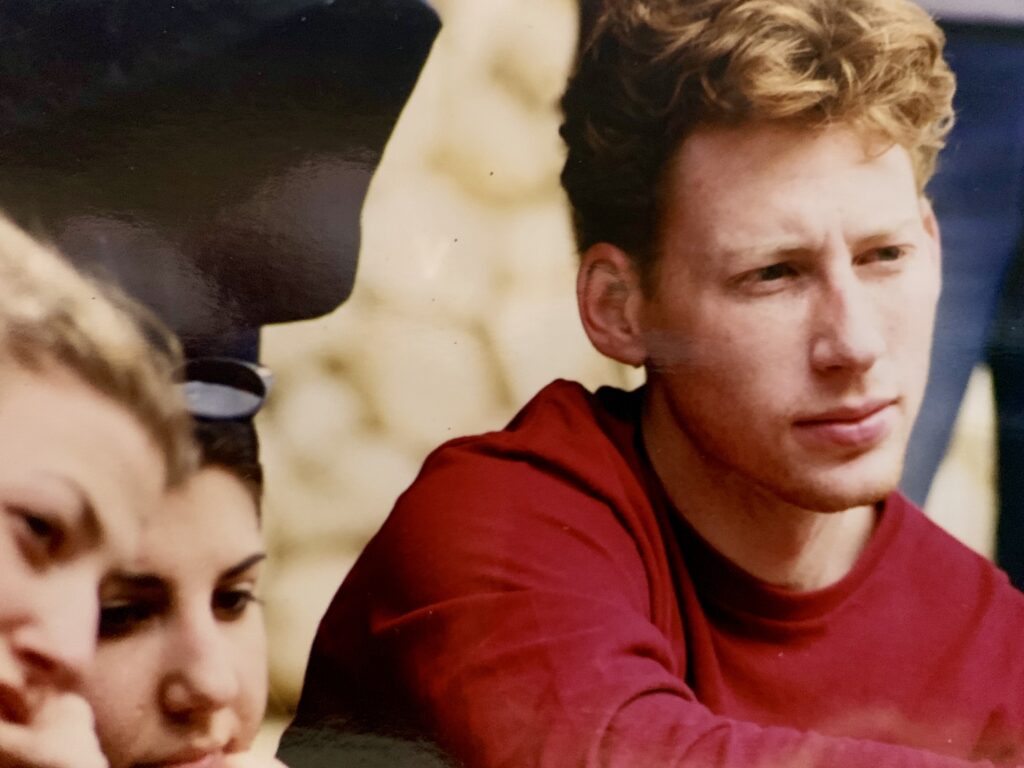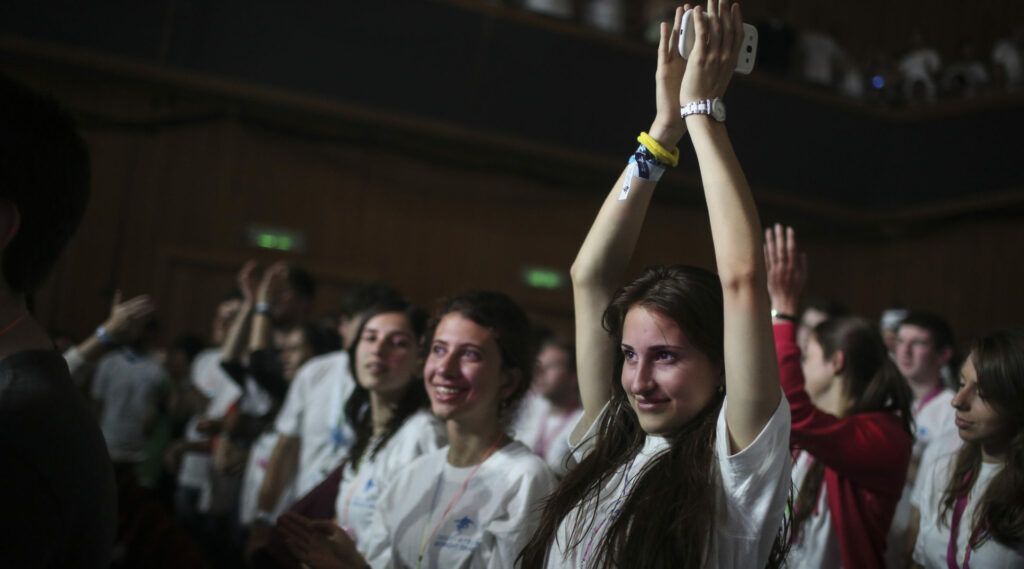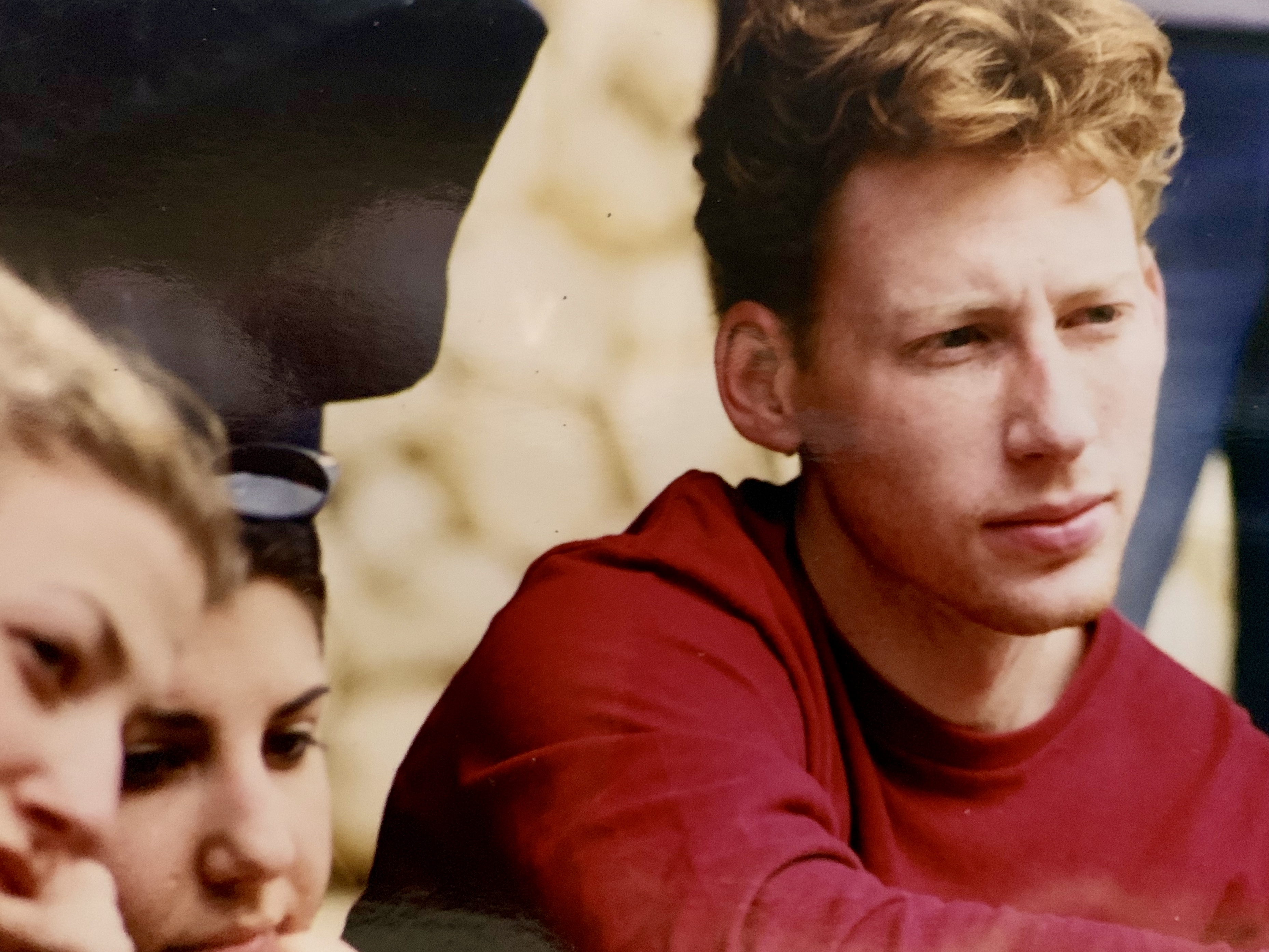
Eighteen years ago, I left my job as managing editor at the Jewish Telegraphic Agency, a Jewish news service. A couple of days ago, I returned with this piece, contrasting efforts to attract young Jews, then and now. One advantage of being old is I can consult 18-year-old notes and track trends across time. I thought the JTA editors did a wonderful job of taming my rambling prose and getting to the point faster. But I also present this “writer’s cut” edition of the piece. It emphasizes slightly different things than the version that ran. This one is more reflective of my search for a way that “cultural Judaism” can find a home without being dismissed as unsustainable. I have heard from Jewish lay and religious leaders for 35-plus years that “cultural Judaism” is a dead-end. Yet still, it endures.
By Howard Lovy
At the beginning of the year 2000, then-Israeli Knesset Speaker Avram Burg looked down upon more than 4,000 young “unaffiliated” Jewish faces at the Binyanei Ha’umah convention center in Jerusalem and told them they were “the first generation that can ask the question, ‘Can the Jewish people survive without an external enemy?’”
Burg nodded toward a smiling Michael Steinhardt, who was moved to tears at the rock-star greeting he was given by participants in one of the first Birthright Israel trips that he co-sponsored. Anti-Semitism was on the retreat, Steinhardt had warned the young Jews, but therein lies danger because it means a weakening of Jewish ties.
I was managing editor at JTA at the time. Today, going through my 20-year-old notes, I am struck at how often Jewish lay and religious leaders voiced a fear that an end to anti-Semitism would further erode the tenuous connection young people had to Judaism. It all seems quaintly naive today. Yet even though they were wrong about an end to anti-Semitism, they were right in turning the discussion to how to embrace more Jews who acknowledge only a tenuous connection to Judaism. That was the original thought behind Birthright Israel.

Twenty years ago, I was on a personal quest for a Judaism of meaning, myself. I was an odd choice for managing editor at JTA, because at the time I knew very little about the organized Jewish world. I grew up primarily in small communities, with my family often one of only a handful of Jews in town. So, the way I practice Judaism is very personal and not at all communal. The publisher at the time hired me for my news judgment first, connection to Judaism second. I guess you could say that I was JTA’s own private Birthright experiment.
I wrote about the birth of Birthright, and attended a United Jewish Communities Young Leadership Conference to talk to younger Jews who were searching for connection. And the mantra I continuously heard was often the same. Richard Joel of Hillel said the whole idea of cultural Judaism was too vague to be sustainable. Elliott Abrams, who at the time was president of the Ethics and Public Policy Center, moaned that cultural Jews were “lost to Judaism.”
The issue almost came to blows when I covered a meeting of another initiative of Michael Steinhardt. He, along with Edgar Bronfman and Charles Schusterman, had launched STAR: Synagogue Transformation and Renewal. Again, the “problem” was a decline in anti-Semitism. “The Jewish world, certainly in America, is in crisis,” Bronfman told me in a 2000 interview at a STAR conference in Chicago. “The fact that we don’t think it’s in crisis is unfortunate—because we’re doing so well, there’s so little anti-Semitism, etcetera. But we’re disappearing.”
Steinhardt, the homespun, folksy philosopher of the trio, stopped the show with this bombshell. “I tend, in my dourest moments, to consider both the Reform and Conservative Jews as historic accidents in the 21st century and suspect before the end of this century they will have disappeared.” This, and similar statements by Bronfman, had irked Rabbi Eric Yoffie, who was president of the Union for Reform Judaism at the time. Undermining non-Orthodox synagogues was not the way to encourage experimentation.
“I’m not going to get into a pissing match with Rabbi Yoffie over whether the Reform movement is a good movement or not because that’s not the point,” Bronfman told me. “The point is, we have a crisis and I don’t care how we go about getting young people involved in their Jewishness.”
“The old way of Sunday school until Bar Mitzvah—that didn’t work. They left.”
Twenty years ago, they would have been counted as lost to Judaism. I’m afraid that, today, these “cultural Jews” are still not counted.
I agreed with Bronfman because, unlike Yoffie, he said let’s change Judaism to meet Jews where they already are, and not try to draw them into where we want them to be. In the end, my quest was interrupted. After the breakdown of talks between Barak and Arafat and the beginning of the second intifada, I left JTA, moved back to Michigan, and pivoted my career to cover science and technology. Sixteen years later, I began writing about Jewish issues again after I noticed more swastikas in my social media timeline after a decade and a half of being relatively swastika-free.
It is a sad contrast, the difference between the Jewish mood of 20 years ago and today. We did not know how to handle a drop in anti-Semitism, and there was what seemed to me to be deep depression and desperation among Jewish leaders to attract the young. Today, as I interview people whose connection to Judaism is strengthened through the rise in anti-Semitism, I also note that many are still unaffiliated with synagogues. Twenty years ago, they would have been counted as lost to Judaism. I’m afraid that, today, these “cultural Jews” are still not counted.
When faced, again, with existential crises, now is the time to talk about what being Jewish is and what it means. In fact, it’s the perfect time, because people who never thought about their Judaism before are now constantly reminded of it by anti-Semites.
I never wanted anti-Semitism to define the way I write about Judaism. But the rise in anti-Semitism can, perhaps, help us see clearer than we did 20 years ago. We can see who is with us and who is not. Jews are standing up to be counted. I would be more optimistic for the future if we found a way to embrace them.
And the edited version for the Jewish Telegraphic Agency ..
Anti-Semitism is strengthening the Jewish identity of young people. Why haven’t our organizations embraced them?

Read the full article on the Jewish Telegraphic Agency website.
